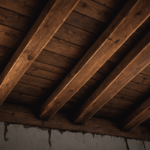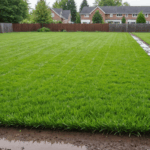Understanding the causes behind clogged drains is essential for effective plumbing maintenance and avoiding inconvenient blockages. While individual circumstances can vary, several common factors frequently lead to the unwelcome situation of clogged drains. Identifying these causes can help homeowners better manage and even prevent future plumbing issues through appropriate preventative measures or timely DIY interventions.
One primary cause of clogged drains is the accumulation of debris over time. In kitchen sinks, this often results from food particles, grease, and soap scum building up on the interior walls of pipes. This build-up reduces water flow and eventually leads to a blockage. Similarly, in bathroom drains, hair, soap residue, and personal care products can lead to significant clogging issues. Toilets can also become blocked due to excessive use of toilet paper or the flushing of non-flushable items such as wipes or feminine hygiene products.
Another significant factor in drain clogs is the presence of foreign objects. In households with children, toys and small items are sometimes inadvertently flushed or end up in drains. These objects can become stuck and create persistent clogs that require careful management to remove.
Beyond these household-related causes, structural issues within the plumbing system itself, such as pipe damage or misalignment, can contribute to drainage problems. Over time, pipes may corrode or shift, leading to places where debris and sediment can collect more readily. For properties with older plumbing infrastructure, tree roots are a notorious cause of clogs, as roots can invade pipe systems, seeking moisture and nutrients, which results in obstruction and even breakage of pipes.
The interaction of these different causes both complicates and informs the process of unclogging drains, emphasizing the necessity for diligent plumbing maintenance and regular inspection. Understanding these underlying causes not only demystifies the source of clogged drains but also guides property owners in selecting appropriate interventions, whether through DIY methods or professional assistance.
For a better understanding of how each of these common causes impacts the degree of clogging and the necessary maintenance approach, consider the following comparison:
| Common Cause | Impact | DIY Solutions | Professional Intervention Needed |
| Food particles, grease, and soap scum in kitchen sinks | Gradual reduction in water flow, full blockage over time | Regular cleaning, use of drain strainers, enzymatic cleaners | Significant blockages requiring hydro-jet cleaning |
| Hair, soap, and personal care products in bathrooms | Slow draining, full blockage in severe cases | Hair traps, frequent removal with tools or chemical products | Severe blockages may require snaking by professionals |
| Tree roots invasion | Root intrusion can lead to pipe damage and severe clogging | Minimal DIY options, initial assessment with cameras | Root cutting/root removal services |
By discerning the specific causes of clogged drains in their homes, property owners can make informed decisions on the most effective ways to prevent and resolve these issues. Regular maintenance and the consistent monitoring of household habits can substantially mitigate the frequency and severity of drain clogs, ensuring reliable, trouble-free plumbing.
Preventative maintenance techniques
Consistent care and attention can greatly reduce the likelihood of encountering the inconvenience of clogged drains. Implementing an effective preventative maintenance routine not only prolongs the life of your plumbing system but also saves time and money in the long run. Here are some practical steps you can take to maintain your drains and keep them clear:
1. Install Strainers or Screens:
– Use metal or silicone strainers in kitchen and bathroom sinks to catch food particles, hair, and soap scum that might otherwise wash down and cause a clog.
– Clean these strainers regularly by removing collected debris and rinsing them thoroughly with hot water.
2. Regular Flushing:
– Once a week, pour a kettle of boiling water into your kitchen and bathroom sinks to help dissolve potential build-ups and maintain a smooth flow.
– For a deeper cleanse, mix a solution of one part baking soda with two parts vinegar, pour it down the drain, wait for 15 minutes, then flush with hot water.
3. Mindful Kitchen Practices:
– Avoid pouring grease or oil down the drain as they can solidify and cause a blockage. Instead, dispose of them in a separate container for disposal.
– Scrape food remnants into the trash or compost bin rather than rinsing them down the sink.
4. Routine Bathroom Upkeep:
– Use a hair trap in your shower or bathtub to catch hair before it goes down the drain.
– Encourage the use of a wastebasket for sanitary items and excessive amounts of toilet paper.
5. Create a Monthly Cleaning Schedule:
– Incorporate enzyme-based drain cleaners into your monthly routine as they are designed to break down organic material over time and keep pipes clean.
– Be sure to follow the instructions on the product label for best results and use enzyme cleaners that are environmentally friendly.
6. Inspect and Maintain Plumbing:
– Conduct regular inspections of visible pipes for any leaks or signs of wear and tear.
– Tighten or replace worn gaskets and seals to maintain the integrity of your plumbing system.
Incorporating these preventative measures into your routine can significantly diminish the chances of a clog. Such diligence not only keeps your drains functional but also reduces the likelihood of more severe plumbing issues that may require professional intervention. Practicing these steps demonstrates that a little DIY initiative goes a long way in maintaining a healthy plumbing system.
DIY solutions for minor clogs
When you’re dealing with clogged drains, often the best approach is to employ some simple DIY solutions before calling in the professionals. These home remedies can be quite effective for minor clogs and typically require just a few readily available tools and ingredients.
One tried-and-true method involves the use of baking soda and vinegar. This combination is particularly effective at breaking down organic matter in drains. Start by pouring a cup of baking soda into the affected drain, followed by a cup of white vinegar. Let the mixture fizz and sit in the drain for about 15 to 30 minutes before flushing it with a pot of boiling water. This reaction helps dislodge minor blockages caused by soap scum, small food particles, or hair, making it easier for the blockage to pass through the pipes.
When attempting to clear a minor clog, consider using a plunger, a staple in any homeowner’s arsenal of DIY tools. Ensure you use the appropriate type of plunger—cup plungers work well for sinks and tubs, while flange plungers are designed for toilets. Seal the plunger around the drain and give a few firm pumps to create suction and dislodge the clog.
For situations where the clog remains persistent, a drain snake or auger can be invaluable. These tools are designed to reach deeper into the plumbing system, grabbing debris like hair or food particles that might be causing the blockage. To use a drain snake, insert the flexible end into the drain and slowly rotate it as you push it further down the pipeline. With some maneuvering, the snake will latch onto or break up the offending mass, allowing it to be removed or flushed away.
If you’re looking for chemical-free methods, hot water flushing can sometimes do the trick by melting away soap or grease build-up in kitchen sinks. Boil a full kettle or pot of water and carefully pour it down the drain, making sure not to damage any porcelain or plastic components with excessive heat.
In addition to these quick fixes, enzymatic drain cleaners provide an effective solution by digesting organic residues over time, which keeps the pipes clear and well-maintained without resorting to harsh chemicals. These products are also eco-friendly and safe for regular use, aligning with a more environmentally-conscious approach to plumbing maintenance.
While DIY solutions can effectively tackle minor issues, understanding when a clog is beyond home remedy and requires professional plumbing services is crucial. Nevertheless, with these DIY techniques, homeowners can often resolve small blockages themselves, saving time and money while gaining a greater understanding of their home’s plumbing system.
When to call a professional
Sometimes, despite your best efforts at preventative maintenance and trying out DIY solutions, you might still encounter clogged drains that stubbornly refuse to clear. Recognizing the signs of these persistent issues can help you determine when it’s time to rely on professional plumbing expertise instead of continuing with potentially ineffective home remedies.
If you’ve tried multiple DIY methods and notice that water continues to drain slowly, or if it stops draining altogether, that’s often a strong indicator that the clog is beyond what home techniques can address. Similarly, if you hear gurgling sounds or see standing water backing up in sinks, tubs, or other plumbing fixtures, these are warning signs that the blockage is likely deep within the pipes and requires specialized tools to effectively manage.
Frequent clogs in the same location often suggest more complex, underlying problems that a professional should assess. Issues such as tree root intrusion, pipe corrosion, or structural plumbing damage are best identified and resolved by experts who can conduct a thorough examination, often using advanced equipment like cameras for internal inspection of your pipes.
Another scenario necessitating professional help is the presence of foul odors emanating from drains or an unexpected increase in water bills, both of which can signify substantial leaks or blockages requiring immediate attention. Furthermore, if you encounter situations where household tools or basic plunger and snake methods are unsuccessful, professionals have access to more advanced, robust equipment like industrial-grade augers and hydro jetting systems that can clear even the most tenacious clogs.
In multi-story homes, clogs affecting multiple fixtures on different levels suggest complex drainage issues, potentially involving your main sewer line, which only skilled plumbers with the right expertise and specialized equipment can handle efficiently. Situations like these often go beyond just unclogging a drain and involve comprehensive plumbing maintenance to restore full functionality.
Remember, acknowledging the limits of DIY interventions and understanding when to reach out for professional help can prevent further damage and more extensive repair costs. By doing so, you can ensure that your home’s plumbing system is not only restored to its optimal condition but also better maintained to prevent future costly and inconvenient disruptions.
Choosing the right tools and products
Selecting the most suitable tools and products is crucial for successful DIY plumbing maintenance and for dealing with clogged drains effectively. Your choice of tools can significantly impact the outcome of your efforts to prevent or fix drainage issues. Here are some considerations to keep in mind when assembling a toolkit for tackling clogs.
The plunger remains an essential tool for handling minor clogs, but it’s important to choose the right type. A cup plunger is ideal for sinks and bathtubs, while a flange plunger is more suited for toilets, as it provides a better seal against the bowl’s curves. When used correctly, a plunger can create the necessary suction to dislodge clogs without causing damage to your plumbing.
For more stubborn blockages, a drain snake or auger can be highly effective. By physically breaking up or retrieving debris that has accumulated in your pipes, these tools offer a mechanical solution to drainage issues. For typical household needs, a manual hand-crank drain snake is generally sufficient. However, for problems involving deeper blockages, consider investing in a powered auger, a tool essential for serious DIY enthusiasts looking to tackle more complex clogs independently.
Chemical drain cleaners can be handy for immediate results, but they should be used judiciously. While they can dissolve organic materials, they often contain harsh chemicals that may damage your pipes and should be avoided for frequent use. Instead, look for enzyme-based or biodegradable cleaners, which offer a gentler, eco-friendly alternative. These products utilize natural enzymes and bacteria to break down buildup without harming your plumbing system.
Additionally, investing in preventative tools like strainers and hair traps can significantly reduce the incidence of clogs. Strainers in kitchen sinks can catch food particles, while hair traps are perfect for showers and bathtubs, preventing hair from entering the plumbing system and creating blockages. By regularly using these simple devices, you maintain clean drains with minimal effort.
Moreover, a basic plumbing tool kit should include a pipe wrench, pliers, and a set of screwdrivers for any necessary disassembly of fixtures or tightening of connections. Having these tools on hand allows for nimble adjustments and repairs, preventing small issues from escalating into more severe problems.
Choosing the right tools and learning how to use them effectively empowers homeowners to address minor plumbing issues independently. Not only does this foster a sense of self-reliance and competence, but it also conserves both time and financial resources by reducing the need for professional intervention for minor tasks.
In conclusion, maintaining your plumbing system doesn’t have to be a daunting task. By understanding the root causes of clogs, implementing preventative maintenance, and having the right tools and products at your disposal for DIY fixes, you can avoid many of the common issues that lead to clogged drains. Even when professional help is necessary, being well-informed can lead to better outcomes and peace of mind, knowing that your home’s plumbing is in good hands. With a proactive approach to maintenance, you ensure the longevity and efficiency of your plumbing system, reducing the risk of costly repairs in the future.










